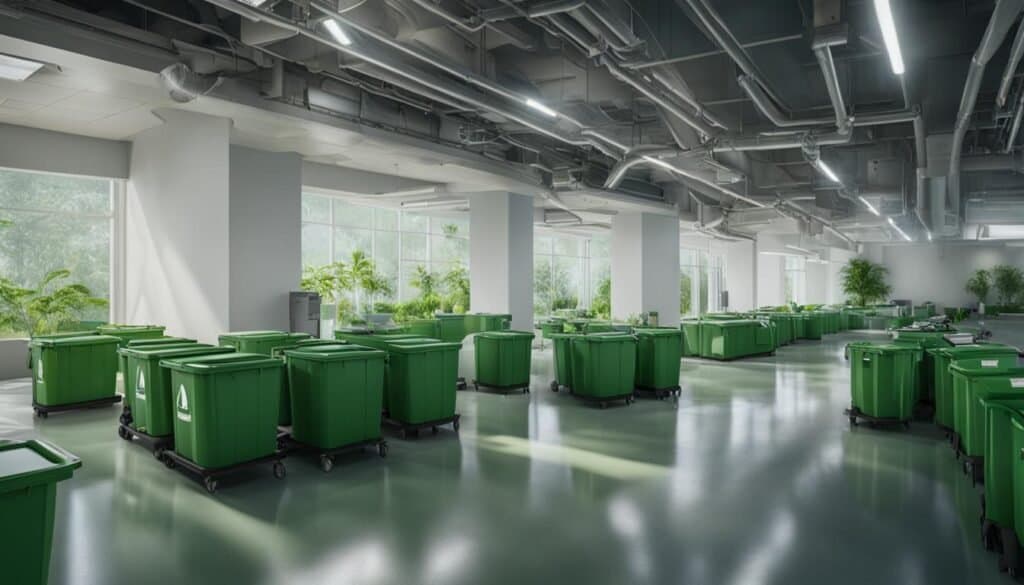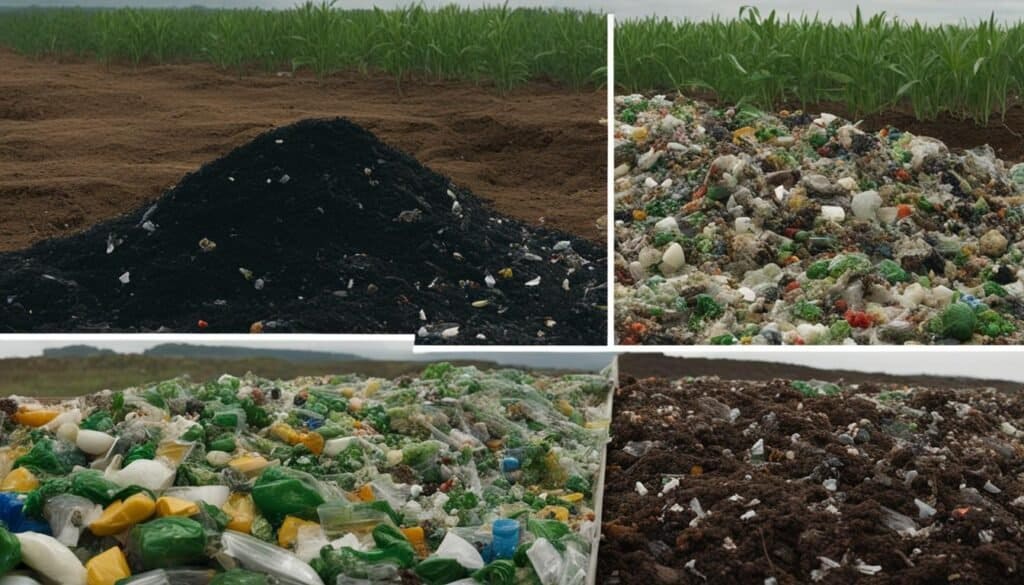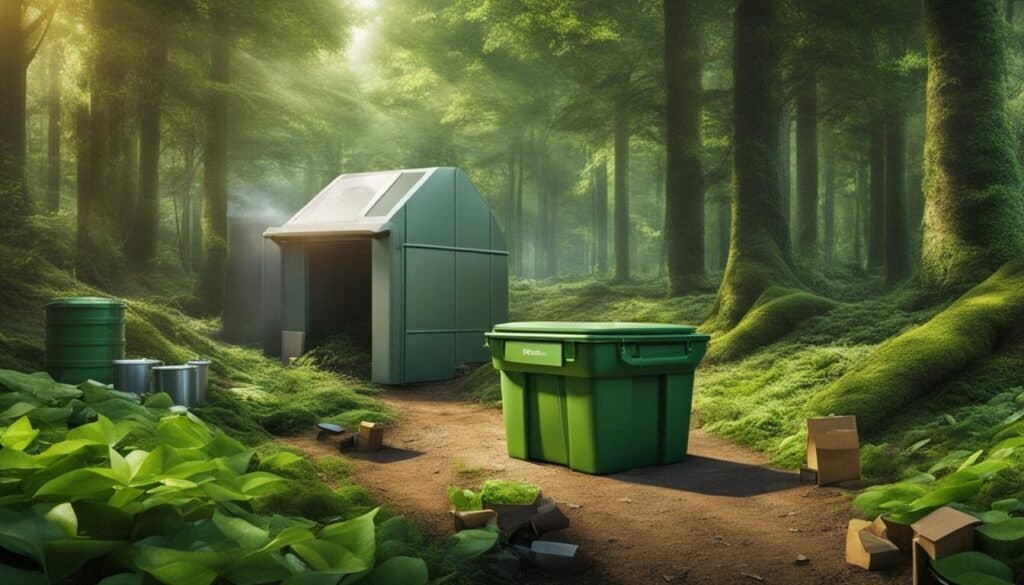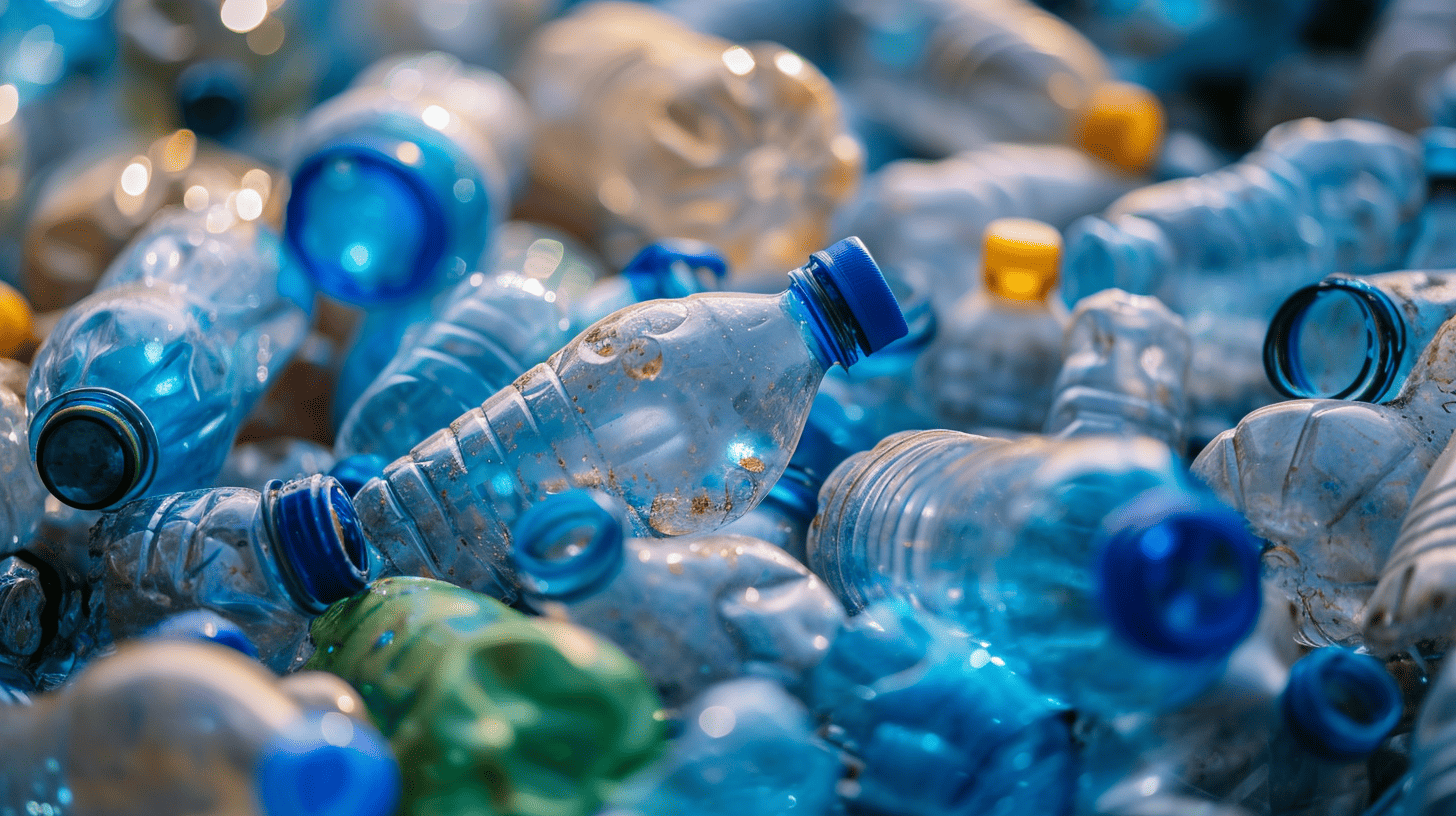As a passionate environmentalist, I fully understand the urgency of tackling plastic waste and its consequences on our planet. Over the past few years, I’ve been researching the critical role that biodegradable materials play in addressing the environmental concerns of plastic waste, particularly in sectors like healthcare. In a world saturated with conventional plastics, primarily made from non-renewable fossil fuels, biodegradable plastics derived from renewable resources such as plants, starches, or agricultural waste offer a much-needed solution in mitigating the environmental impact of plastic pollution.
Substantial changes in waste management systems are required to ensure the transition toward biodegradable solutions in the healthcare industry and beyond. From device components to packaging, the potential for reducing the environmental footprint using biodegradable plastics is immense. The journey to sustainability involves continuous improvement in biodegradable plastics’ functionality and an overall shift in society’s procurement policies and legislation.
Key Takeaways:
- Biodegradable product waste reduction plays a crucial role in managing plastic waste and promoting sustainability
- Biodegradable plastics offer an environmentally friendly alternative to conventional plastics made from fossil fuels
- The healthcare industry stands to benefit significantly from the adoption of biodegradable solutions
- Continuous research and development efforts are vital to enhancing the performance of biodegradable plastics
- Strategic changes in procurement policies and legislation are essential to driving the widespread adoption of biodegradable materials
The Current State of Plastic Pollution and Waste Management
Tackling the pervasive issue of plastic waste has become a priority of mine, especially since understanding the shocking reality that out of 8.3 billion metric tons of plastics produced, about 6.3 billion metric tons have become landfill waste or environmental pollution. Although landfills are meticulously engineered to protect against leachate releases, they are primarily designed for waste storage, not decomposition. The fact that plastics take an extensive period to degrade leads to a rapid saturation of landfill space, exacerbating air, water, and soil contamination.
Lisa Beres from Earth911 recommends using glass straws, compostable single-use items for events, wool dryer balls instead of dryer sheets, reusable coffee mugs, rechargeable batteries, and a home water filtration system to reduce plastic waste.
The Overwhelming Presence of Plastic in Landfills
In 2014, for instance, 136 million tons of municipal solid waste were landfilled, and plastic constituted 18% of that volume. With a linear economic model for plastics where products are used once and then discarded, landfills and natural habitats face continuous accumulation of waste. This unsustainable practice emphasizes the necessity of exploring alternative waste solutions.
Challenges Posed by Non-Biodegradable Plastics
Non-biodegradable plastics present considerable environmental challenges due to their persistence in nature. Such materials contribute to persistent environmental pollutants and are notoriously known for remaining in the environment, causing harm to natural ecosystems, wildlife, and human health. This underscores the importance of improving plastic waste management, emphasizing the need to shift away from traditional plastic materials.
Understanding the Lifecycle of Traditional Plastic Materials
Delving into the lifecycle of traditional plastics highlights their longevity in the environment. The production, usage, and disposal of these non-biodegradable materials contribute significantly to environmental contamination and plastic waste pollution. With the pressures mounting in the wake of China’s refusal to accept foreign plastic waste, the U.S. is now compelled to rethink and innovate its recycling infrastructure and consider alternatives like biodegradation and industrial composting.
| Year | Total Plastics Produced (metric tons) | Landfill Waste (metric tons) | Environmental Pollution (metric tons) |
|---|---|---|---|
| 2000 | 4.12 billion | 2.88 billion | 260 million |
| 2005 | 4.95 billion | 3.47 billion | 315 million |
| 2010 | 6.33 billion | 4.44 billion | 371 million |
| 2014 | 7.39 billion | 5.17 billion | 436 million |
Transitioning to biodegradable materials and developing more sustainable waste management strategies will significantly reduce the harmful effects of plastics on our environment and ecosystems. It is crucial that we continue to raise awareness and promote meaningful changes that acknowledge the growing threat of plastic pollution and landfill waste.
The Evolution of Biodegradable Plastics
The evolution of biodegradable plastics has been a focal point in the shift towards eco-friendly alternatives. Unlike their conventional counterparts, biodegradable plastics are products of innovative research aimed at creating environmentally sympathetic solutions. Scientists are continually exploring ways to enhance the biodegradability and functional properties of these materials. Efforts include adjusting their chemical composition and investigating additives to improve the efficiency of the biodegradation process.
Notably, these advancements are driven by the demand for materials that can match the strength and stability of traditional plastics while offering the added benefit of natural decomposition. Biodegradable plastics are derived from renewable resources such as plants, starches, or agricultural waste, making them an attractive option for manufacturers looking to reduce their environmental impact.
Biodegradable plastics represent a promising step towards a future with less plastic waste and more sustainability.
As the awareness about the consequences of plastic pollution grows, so does the interest in the development of innovative materials such as biodegradable plastics. With the potential to minimize landfill waste and reduce our reliance on conventional plastics, these eco-friendly alternatives are gaining traction as an integral part of sustainable waste management strategies.
- Research and development of biodegradable materials
- Improvements in biodegradation efficiency
- Investment in renewable resources for plastic production
In conclusion, the evolution of biodegradable plastics marks a significant milestone in our journey towards a more sustainable future. By embracing these innovative materials and supporting research to enhance their performance and reliability, we can take a meaningful step towards reducing the environmental burden of plastic waste and promoting responsible stewardship of our planet.
Implementing Biodegradable Product Waste Reduction Strategies

As we delve into the significant impact that adopting biodegradable product waste reduction strategies can have, it’s crucial to recognize some of the most effective methods. The healthcare industry can drive change through sustainable procurement policies and the establishment of industrial composting standards, while also educating consumers on responsible waste disposal.
Adopting Sustainable Procurement Policies in Healthcare
The implementation of sustainable procurement policies within healthcare organizations is key to promoting waste reduction and the use of biodegradable medical products. By prioritizing eco-friendly alternatives, healthcare providers can help push the industry toward a more environmentally conscious future. Raising awareness among healthcare professionals and patients about the benefits of biodegradable solutions will further encourage this transition.
Setting Industrial Standards for Biodegradable Materials
Establishing industrial composting standards for biodegradable materials is essential to ensure they contribute positively to composting processes. The use of certifications such as ASTM D6400 validates that these products can decompose at rates compatible with other compostable materials in municipal and industrial facilities. Rigorous testing measures provided by BPI and adherence to standards set by CMA offer assurance that certified products will not disrupt the composting environment or contaminate the resulting compost.
Consumer Education on Responsible Waste Disposal
Effective biodegradable waste management relies on consumers being well-informed on proper disposal techniques. Clear communication about the differences between biodegradable, compostable, and recyclable materials is crucial. Composting facilities can maintain operational integrity by implementing fines for improper disposal or rejecting contaminated loads. Consumer education campaigns must emphasize proper sorting and disposal methods to prevent petroleum-based plastics from contaminating compost feedstocks.
| Strategy | Description | Benefits |
|---|---|---|
| Sustainable Procurement Policies | Healthcare organizations establish guidelines prioritizing eco-friendly alternatives. | Reduces plastic waste and promotes environmentally conscious practices. |
| Industrial Standards for Biodegradable Materials | Establishing certifications and testing measures that ensure compatibility with composting processes. | Prevents disruption of composting environments and contamination of compost. |
| Consumer Education | Informing consumers about proper disposal techniques for biodegradable, compostable, and recyclable materials. | Ensures responsible waste disposal and prevents contamination of compost feedstocks. |
Comparing Conventional and Biodegradable Plastics

As we strive towards finding sustainable solutions to manage plastic waste, it is essential to understand the fundamental differences between conventional and biodegradable plastics. The distinctions between these materials lie in their sources, long-term environmental impact, and performance metrics such as durability and biodegradability.
Material Source: Renewable vs. Fossil Fuels
Traditional plastics heavily rely on finite fossil fuels, contributing to carbon emissions and depletion of non-renewable resources. In contrast, biodegradable materials are derived from renewable resources like starches, plant-based materials, and agricultural waste. The shift to using biodegradable plastics can help mitigate the impacts of climate change and foster a more sustainable future.
Long-term Environmental Impacts of Plastic Usage
Conventional plastics have notoriously long decomposition rates, resulting in a massive accumulation in landfills and natural habitats. This leads to undermining ecosystems and contributes to pollution. On the other hand, biodegradable plastics decompose naturally over time, presenting a more favorable environmental profile in reducing pollution and conserving non-renewable resources.
Performance Metrics: Durability and Biodegradability
When assessing the performance of biodegradable plastics, it is crucial to evaluate their durability and biodegradability. Manufacturing processes of biodegradable plastics typically consume less energy compared to traditional plastics, resulting in lower greenhouse gas emissions. Moreover, these compostable materials are engineered to degrade appropriately over time, leading to less landfill space usage and ultimately benefiting waste management systems.
The Intersection of Biodegradation, Composting, and Circular Economy

The convergence of biodegradation, composting, and the circular economy marks a promising approach to tackling plastic waste. This interconnection highlights the vital need for solutions that support waste reduction and reuse, focusing on limiting the negative environmental impact of the plastic industry.
By fostering governmental incentives and adjusting consumer expectations, the plastic industry can be swayed towards prioritizing biodegradable and compostable products. Integrating these materials into the supply chain can help systemize waste management processes, facilitating the recycling, composting, or biodegrading of single-use items. Consequently, this lessens the pressure on our valuable ecosystems and resources.
Moving towards a circular economy involves several crucial steps:
- Designing sustainable products using biodegradable materials to minimize their footprint throughout their lifecycle.
- Enhancing waste management systems by incorporating industrial composting at scale to handle biodegradable plastics.
- Incentivizing innovation in materials and streamlining production processes to drive efficiency and reduce resource consumption.
- Investing in research and development to uncover groundbreaking solutions for sustainable waste management and waste reduction tactics.
A circular economy does not exclusively entail a complete overhaul of production protocols or consumer behavior. Instead, it aims to carefully refine existing systems, gradually steering all stakeholders towards more sustainable pathways. Properly addressing plastic waste requires holistic thinking that encompasses the entire plastic lifecycle. Together, we can work toward reducing our dependence on non-renewable resources, ultimately welcoming a greener, more sustainable future.
Conclusion on Biodegradable Product Waste Reduction
As we reach the end of our exploration into biodegradable product waste reduction, it is evident that we are on the cusp of a critical transition in sustainable waste management. By choosing to embrace biodegradable plastics, we directly combat plastic pollution while investing in a sustainable and eco-friendly future. This shift will demand concerted efforts from policymakers, industry leaders, and consumers to create a waste management system that aligns with our ecological goals.
In the journey towards environmental stewardship, numerous challenges and opportunities lie ahead. The healthcare industry, for example, presents significant potential for the adoption of biodegradable plastics, leading to substantial reductions in waste and pollution. The establishment of industrial standards and the promotion of consumer education will further strengthen our collective resolve to preserve the environment and ensure a more sustainable future for all.
In conclusion, our commitment to biodegradable product waste reduction highlights the importance of working together to protect our planet. As we take vital steps towards sustainable waste management, we are not only shaping a greener future for ourselves but also for the generations to come. Together, we can make a difference and strive for an environmentally responsible and sustainable world.
FAQ on How to Reduce Plastic Waste
Q: What is the difference between conventional plastic and compostable plastics?
A: Conventional plastic is made from non-renewable petroleum resources and takes hundreds of years to break down in the environment. On the other hand, compostable plastics are designed to biodegrade under specific conditions, such as industrial composting facilities. These are often made from bio-based and biodegradable plastics.
Q: How does the use of biodegradable and compostable plastic products contribute to sustainability?
A: Biodegradable and compostable plastic products can help to reduce waste accumulation and divert waste from landfills. They decompose into natural elements under certain conditions, minimizing their impact on the environment. Their production often involves less carbon dioxide emissions compared to conventional plastics.
Q: What is industrial composting and how does it relate to managing biodegradable waste?
A: Industrial composting is a waste management option which involves the controlled breakdown of organic waste, including food waste and compostable plastics. It helps to divert waste from landfills, reducing waste and contributing to sustainability.
Q: How effective are biodegradable packaging materials in managing plastic waste pollution?
A: Biodegradable packaging materials, such as bio-based and biodegradable plastics, can greatly reduce plastic waste pollution. As they decompose under specific conditions into harmless compounds, they prevent waste generation and accumulation in the environment, unlike conventional plastics.
Q: What are the alternatives to conventional plastics and how do they help in waste reduction?
A: Alternatives to conventional plastics include bio-based and biodegradable plastics, recycled plastic, and compostable plastics. These materials are designed to minimize waste as they can be composted, recycled, or degrade more quickly than conventional plastics. Their use contributes to reducing waste entering the waste stream and impacting the environment.
Q: How do biodegradable or compostable plastics affect the waste collection system?
A: Biodegradable or compostable plastics need to be properly disposed of in composting facilities to ensure they break down effectively. This requires efficient waste collection systems that can correctly separate and divert waste. These systems can contribute to waste reduction and sustainability.
Q: How do compostable plastics contribute to reducing food waste?
A: Compostable plastics can be used in packaging food products and responding to household waste needs. When disposed of with food waste in a composting system, they can break down alongside the organic waste, diverting both away from the waste stream and landfill.
Q: What is zero waste and how can the use of biodegradable materials help to achieve it?
A: Zero waste is a philosophy and a design principle that aims to reduce and eventually eliminate waste. The use of biodegradable materials such as biodegradable and compostable plastics can help to achieve zero waste by minimizing waste generation and diverting waste from landfills.
Q: In comparison to conventional plastics, how much waste is generated by the use of biodegradable alternatives?
A: Compared to conventional plastics, biodegradable alternatives generate less waste as they can decompose completely under the right conditions. They become part of the life cycle rather than accumulating as waste, thereby reducing the overall waste generation.
Q: What role does plastic recycling play in managing plastic waste?
A: Plastic recycling is a key part of managing plastic waste as it can turn used plastic products and packaging into new items. This can greatly reduce waste to landfill, decrease the need for new plastic production, and therefore lessen the impact on the environment.
Source Links
- https://www.medicalplasticsnews.com/medical-plastics-industry-insights/medical-plastics-sustainability-insights/the-role-of-biodegradable-materials-in-reducing-medical-plas/
- https://www.ncbi.nlm.nih.gov/pmc/articles/PMC9987405/
- https://www.greendotbioplastics.com/leveraging-biodegradable-plastics-to-divert-waste-from-landfills/





Leave a Reply